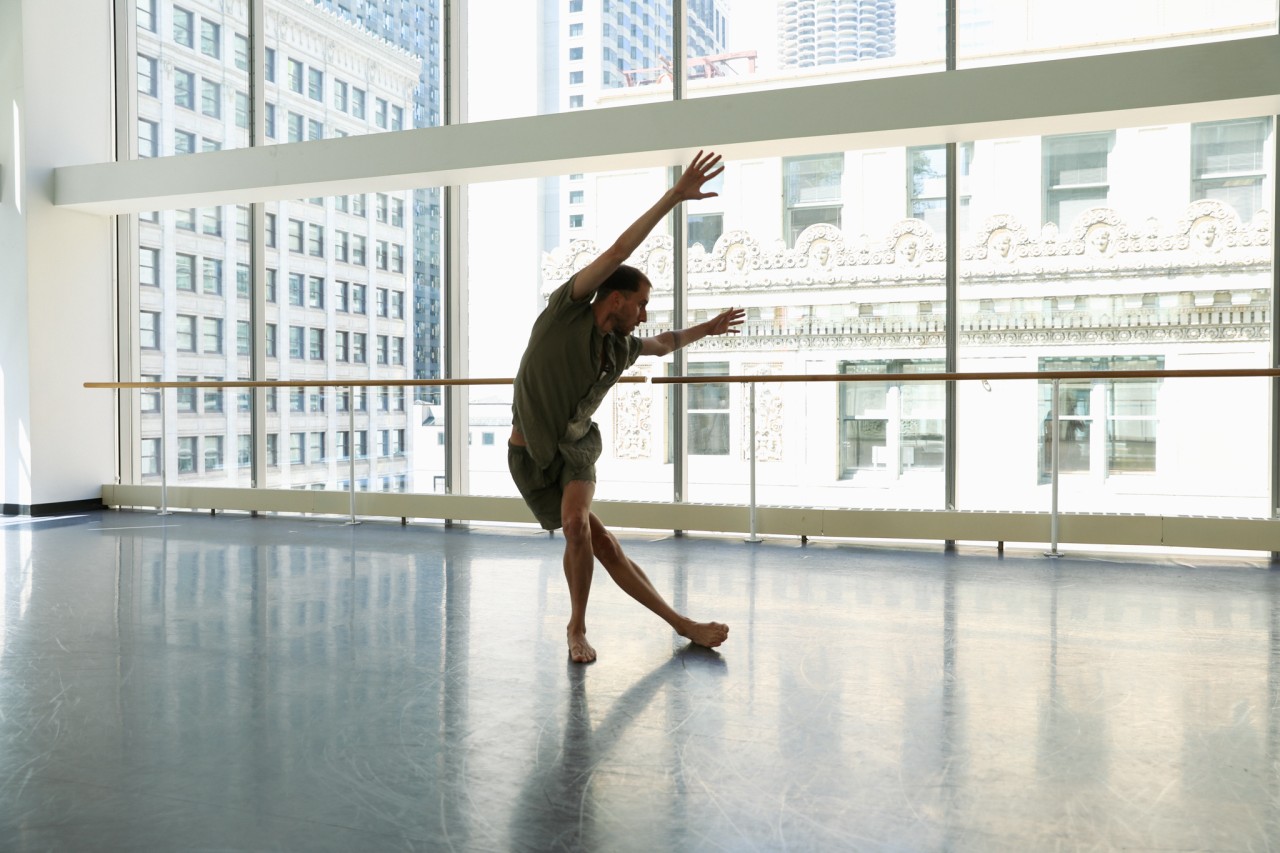Meet Katlin Michael Bourgeois, Joffrey’s New Head of Contemporary Ballet Trainee Program

The artist, choreographer, and educator wants students to approach their work ‘from a place of love’
Katlin Michael Bourgeois is happy to take cues from the best. For Bourgeois, who identifies with pronouns they/them, one of the best is Alonzo King, the famed choreographer and founder of Alonzo King LINES Ballet.
Bourgeois studied under King and graduated from the LINES Training Program in 2014 before moving to Chicago and establishing themselves as a formidable performer, choreographer, and teacher. Now, as the inaugural Head of the Joffrey’s new Contemporary Ballet Trainee Program — the first program of its kind for a classical ballet company in the United States — Bourgeois is bringing at least one guiding principle of their former mentor to the dancers of tomorrow.
“I often ask my students to check in with their thoughts and ask themselves if they’re being kind, if they are coming from a place of love,” says Bourgeois. “When you're not coming from those places, try and check yourself and invite more opportunity and more of your potential into the practice.”
Bourgeois sat down to talk about their experience as an artist, what contemporary dance means to the field, and their vision for the new position.
Tell us a little about your background.
I’m from south Louisiana. It’s a town called Gonzalez. When I was little, my two older sisters were in dance and I remember spending a lot of time in dark theaters, watching them at recitals. From that point on, I had an interest in dance, but never really had access to classes until I was around 16. That was the point where I convinced my parents to let me go for it.
What will you be doing in this new role and how does this fit into “Joffrey for All”?
I'm going to be leading students through their training and act as a mentor, teacher, choreographer. We are hopeful that this program is going to allow a broader range of training and provide space for a more diverse group of students. We envision it as something that is open to everybody and allows a lot of options in terms of what they’re able to do whenever they leave the Joffrey.
How is contemporary training different from classical training?
There are physical things and a different kind of aesthetic. We go to the floor a lot more in contemporary dance. More than anything, the approach to training and the language we use in contemporary atmospheres or environments is more philosophical than a ballet class. We talk a lot about ideas and energies. In my choreographic work or in my contemporary class, the focus is usually not physical but leads to physical events.
Where does contemporary dance fit in relation to the field of dance more broadly?
Contemporary dance is special because it can take on many forms. I imagine it as this blank sheet. You can do whatever you want within that space and break rules or create new rules. It’s a really great tool to tell stories and showcase humanity and the human experience in ways that are a little more nuanced than other genres. It serves as a great style to make a wide range of dance pieces or statements within a dance piece.
As a teacher, what’s one thing you like to emphasize with your students?
The biggest thing that I’ve been thinking about in my teachings is something that I borrowed from Alonzo King, that thought precedes everything. It precedes architecture, writing music, dance, and being able to wield your thoughts in a way that serves your greater purpose. I often ask my students to check in with their thoughts and ask themselves if they’re being kind, if they’re coming from a place of love, if they’re coming from a place of abundance. When you’re not coming from those places, try and check yourself and invite more opportunity and more of your potential into the practice.

What do you hope graduating students take away from the Contemporary Trainee Program?
My hope is they have a wonderful foundation for technical proficiency. I hope they learn to view themselves as artists and not just dancing bodies. I hope they’re able to work with many different creators who will push the limits of what they believe, and that by the time they leave, they feel optimistic about dance and their futures in the dance world.
What does it mean for young students to have a program like this available to them?
This is important for a lot of dancers because there are so many kinds of people in our community and not one program fits all. There always needs to be diversity amongst any sort of community or any training ground. For me, while I really enjoy and love classical ballet in my training, I need a different approach to get me where I want to be in terms of being competitive in the field. It’s important to have space for everybody and anybody who wants to participate. This is going to be an exciting way to open the door for people who don’t feel like they want to be in a classical or modern environment, but rather something that combines many different ideas, techniques, and creates more ways in.
How did you react when Raymond [Rodriguez, Abbott Academy Director] offered you the job?
I was so happy. I was kind of shocked. I had convinced myself that I wasn’t going to get it, so when I got the offer, I giggled and then I wanted to cry, but then I kept smiling because I was so excited, relieved, and just eager to start doing this work.